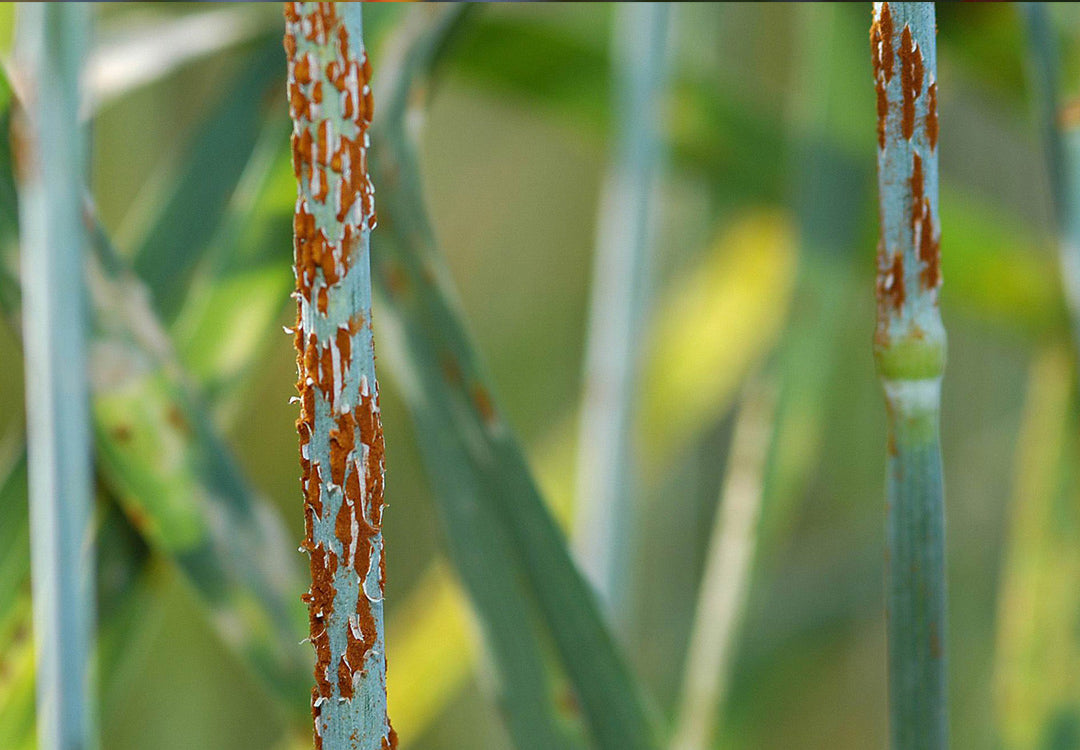
As a gardener, there are few plant health problems that cause as much distress as a fungal disease.
Unfortunately, fungi are one of the most common offenders that attack our plants, and they don’t discriminate between plants that belong to expert gardeners cultivating rare orchids, and novices nurturing their first tomato plant.
Not all fungi are detrimental to plant health; in fact, there are many beneficial fungi that are integral to plant health including mycorrhizal fungi and those that break down organic matter so that plants can digest it, however plant pathogenic fungi do cause a significant loss to plants all around the world and have a significant impact upon the economy. Various research studies have shown that almost 85% of plant diseases are caused by fungi or fungal-like pathogens.
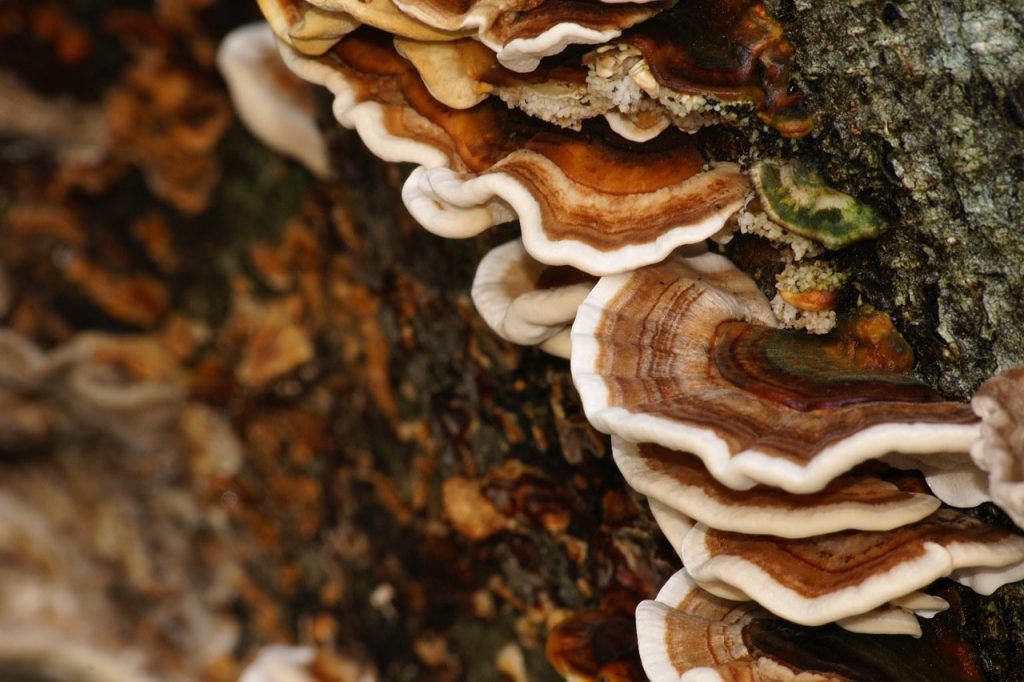
Friendly fungi breaking down deadwood for future plants to absorb. Nothing to worry about here! Image source
These pathogens normally wait in the soil and sneak up on new plants. Once these pathogens become active they exploit plant weaknesses, and once the plant is weak it is exposed to other diseases that it would normally be able to combat without issue.
In this blog post we will discuss how to identify fungal pathogens, and what natural methods, and chemicals, we can use to combat them in the garden and in our indoor plants.
How Can We Identify Fungal pathogens?
In order to diagnose fungal disease, the first and most important step is to identify affected plants. In order to make a positive identification, it’s important to be aware of the natural and healthy appearance of your plant so that you can assess if anything is wrong with the plant.
Often, what we think are health problems are in fact totally healthy plant attributes, for example the variegated leaves of some plant species such as pothos.
Below is a list of some of the most common fungal diseases and the symptoms that will help you to identify fungus-affected plants.
Root Rot:
Usually as a result of too much water, poor drainage or a lack of sunlight, fungal pathogens infest the roots of both indoor and outdoor plants though they’re an especially common problem for indoor plants. The roots will turn brown and squishy, and may have a bad smell. The leaves might wilt or show discolouration.
Root rot will kill your plant and infect its neighbours with spores. The spores will wait until there’s sufficient water and then take hold on those plants too. Affected plants almost always die so it’s recommended to get rid of them and their soil (don’t compost, either burn them or throw them in the rubbish). With that said, unaffected stems can often be propagated.
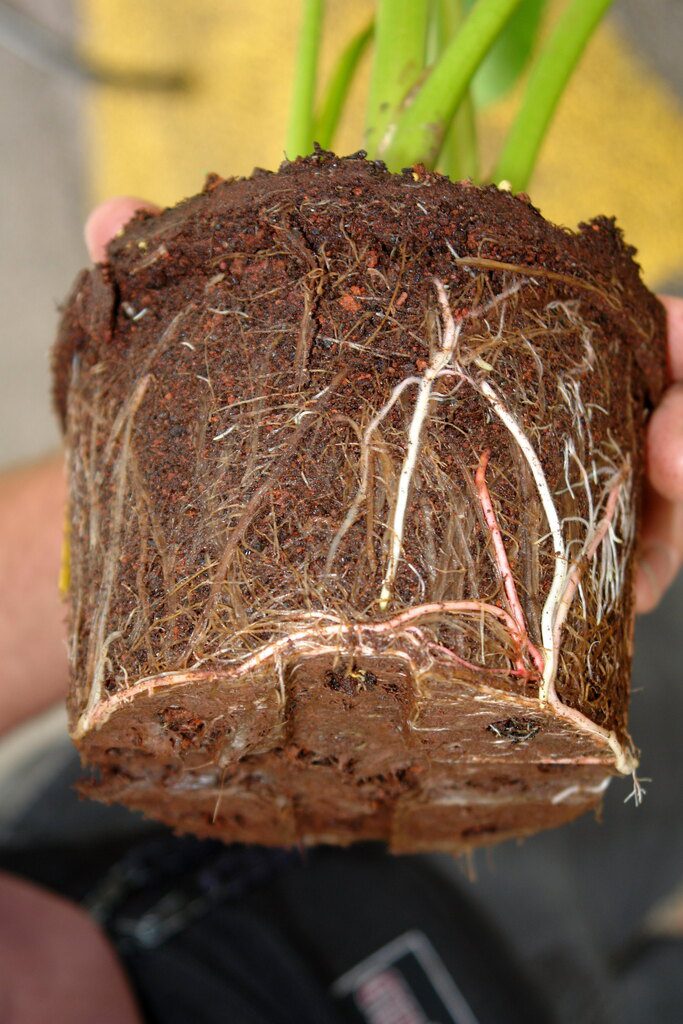
See the brown roots with rot, compared with the white healthy roots. Image source
Black Spots:
It’s easy to identify these fungal pathogenic symptoms on the leaves by simply looking at them. Dark-brown to black leaf spots may develop on the upper leaves, then the leaves may turn to yellow and drop from the plant.
Black spots are usually caused by an over-availability of water on the plant surface in the forms of droplets.

Black spot fungus on a papaya leaf caused by a fungal pathogen called Asperisporium caricae. Image source
Rust:
This disease is called “rust” because of the formation of rust-orange pustules that are formed on the lower side of the plant leaves. Usually the upper leaves are yellow, or white spots are formed as well.
On the undersides of the leaf, orange or yellow spots appear and within these spots spores are formed. In the later stages of the disease, discolouration of the leaf takes place and as a result, it falls off from the plant.
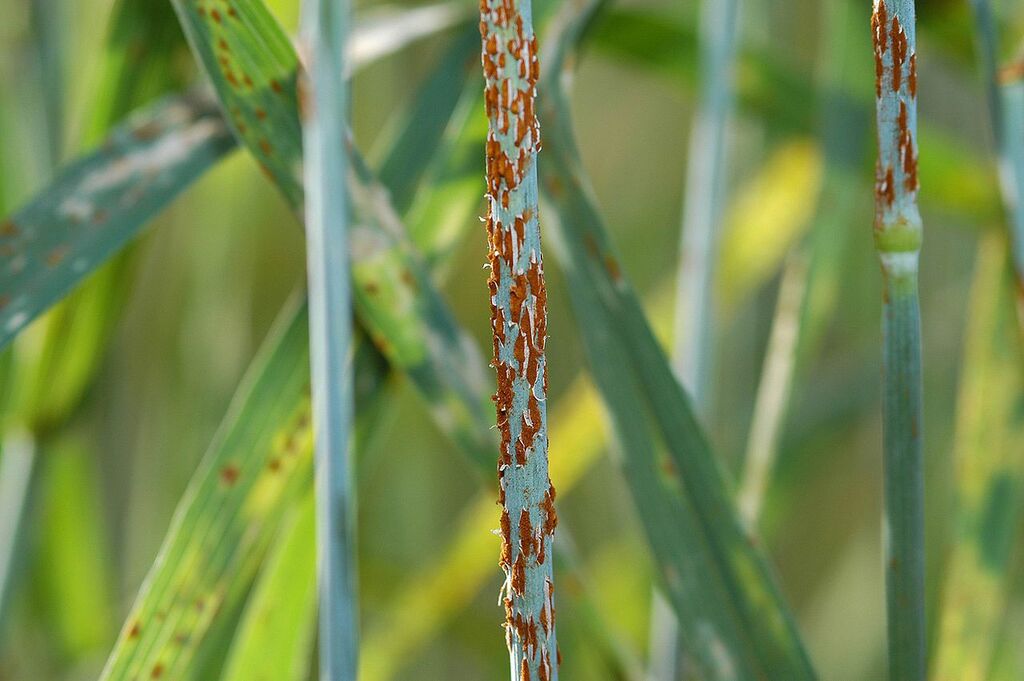
Close-up of stem rust on wheat. Image Source
Botrytis Blight:
This is common in ornamental plants like roses and other flowers, and again, in this case, the morphological changes in the host plant are pretty clear. The earliest symptoms of Botrytis blight are brown spots on leaves and buds or dark spots in the flower petals.
As the disease progresses, fruits and flowers rot and the spots begin to show greyish and fuzzy mold.
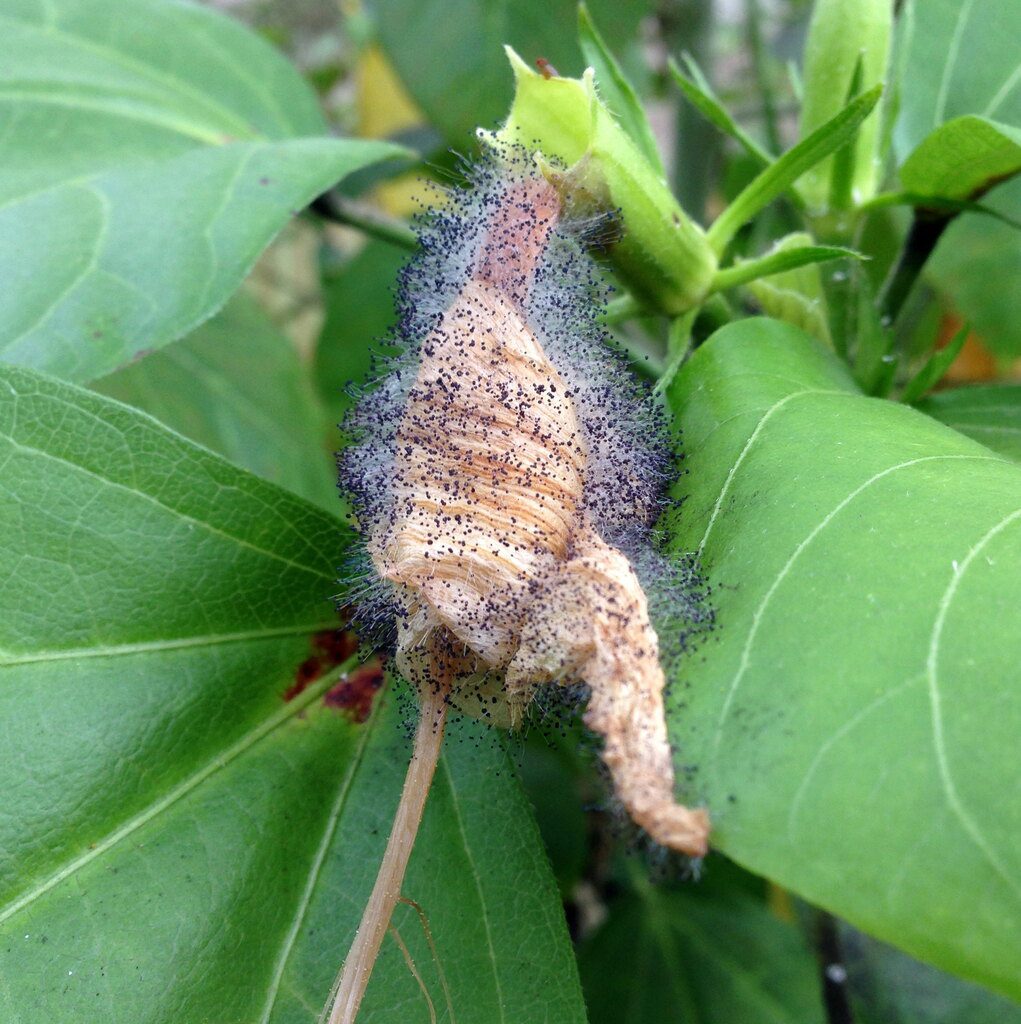
Botrytis blight of hibiscus flower. Image Source
Sooty Mold
This is a fungus that feeds on the sweet “honeydew” secretions made by sucking insects like aphids and scale. It’s not the biggest deal in the world, but it can prevent plants from photosynthesising as the disease progresses.
It’s relatively easy to treat smaller plants by spraying affected parts so they are soaked, and physically wiping the mold off. If you control the insect problem it won’t return as easily.
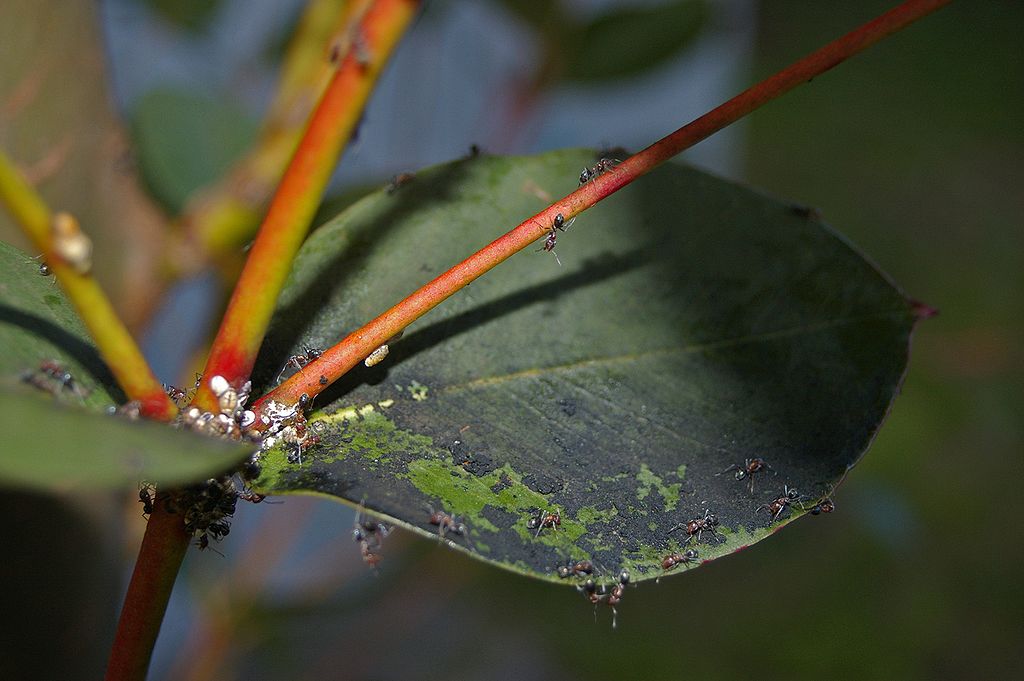
See this sooty mold feeding on the honeydew from the scales, which are being farmed by ants who also like the honeydew. Image source
Powdery Mildews:
In this condition white powdery fungal growth on the plant leaves, shoots, and other parts of the plant are quite clear. Plants infected with powdery mildew look as if they have been dusted with white flour.
It usually starts off as circular, powdery white spots which can appear on any part of the plant including leaves, stems and even fruit. It appears on the upper side of the leaf but may grow on the undersides as well. As a result the leaves eventually become twisted, break and disfigure.
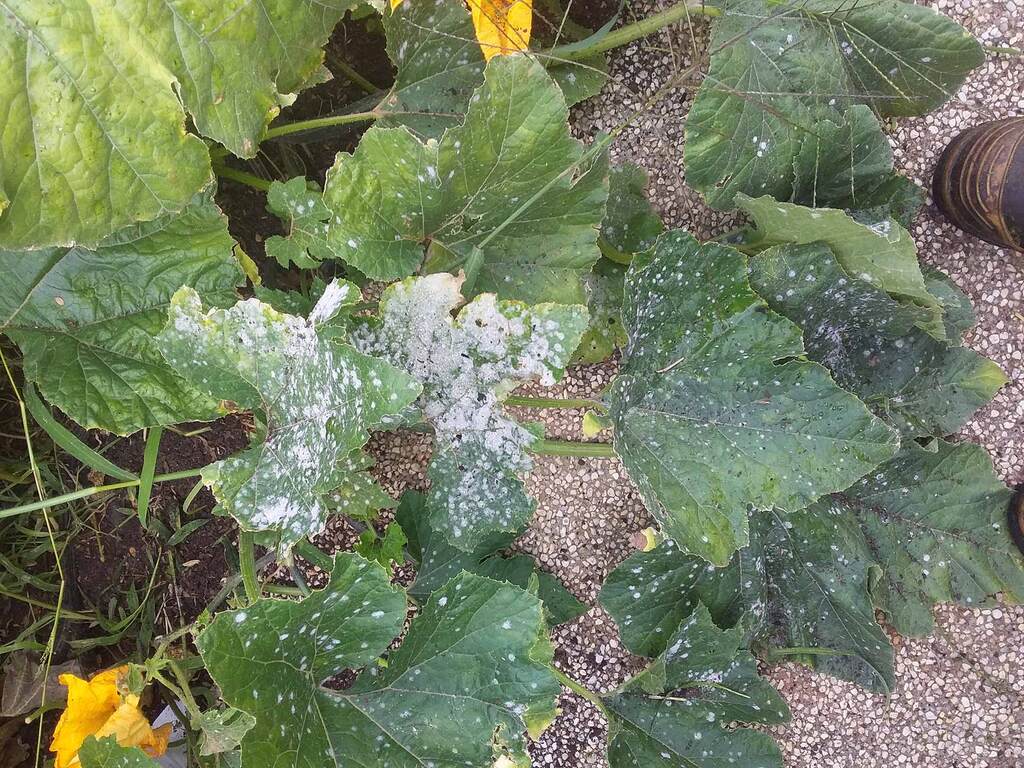
Powdery mildew is a common problem for pumpkins, especially when they are watered in the evening. Photo via Plants Grow Here.
Clubroot:
This disease is common in vegetables like cabbage, turnip and radish. When plants are affected with this disease the colour of the leaves change to a greenish-blue. The roots have abnormal swollen growth and break easily when pulled.
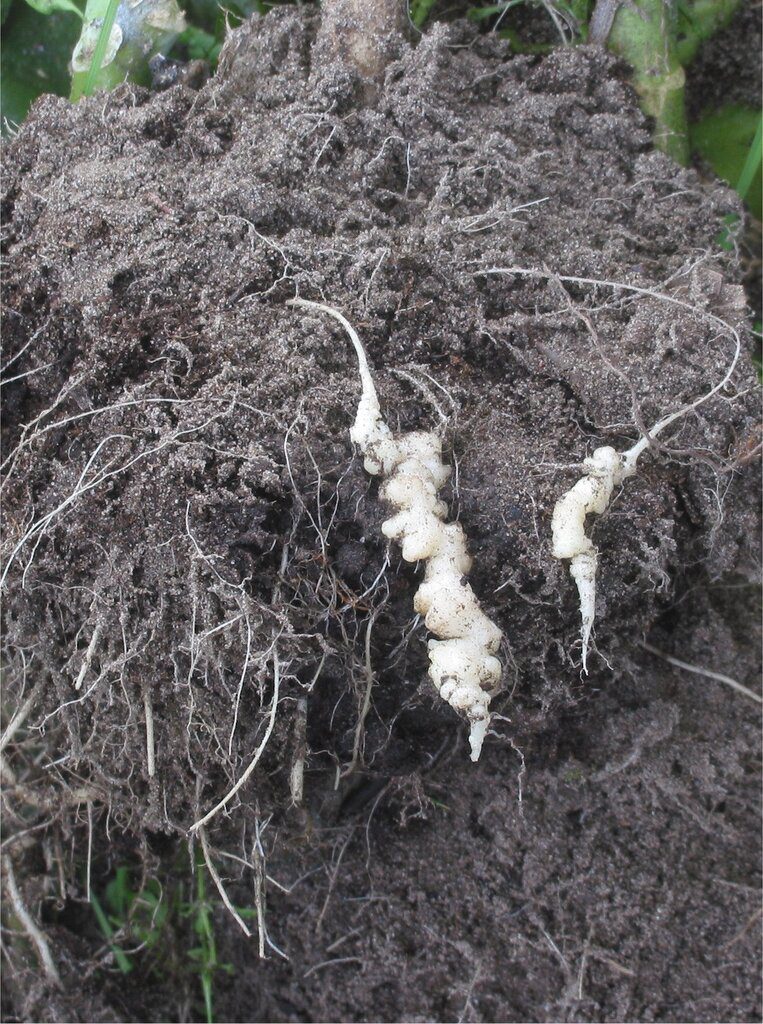
See the swollen roots that look different from the normal fibrous roots on this cauliflower afflicted with clubroot. Image source
8 Natural Ways to Deal With Fungal Pathogens:
Here are some natural ways that can help give gardeners the upper hand against fungal pathogens:
-
Strict sanitation is vital in dealing with fungal pathogens. Remove plants that are badly affected, and avoid working in the garden when they are wet as any moisture will help in the spread of the disease. Pull out weeds in order to improve circulation in your plants.
-
Match your garden/planting site to the requirements of the plant. This is very important because putting the wrong plant in the wrong place can expose the plant to stress as well as diseases.
-
Crop rotation is one of the most effective strategies to avoid fungal pathogens. Rotating annual plants and crops to different parts of the garden will help reduce losses caused by soil-borne pathogens.
-
One of the pre-requisites for fungal growth is an excess of moisture. Be careful while watering your plants, and water closely to the ground to avoid the unnecessary wetting of leaves. Water early in the morning so excess moisture dries by nightfall; regularly watering in the afternoon means that the plant parts above the ground stay moist and susceptible to fungal attack.
-
Promptly prune any fungally infected parts of the plant and discard the debris properly. Don’t compost any plant matter infected with fungal pathogens. Always try to cut back to healthy tissue so no disease remains in the plant body and sanitise your infected pruners between each cut.
-
The last three are probably less effective than the above methods, but you can give them a try if you wish. Milk is an ingredients available in most kitchens, and has a positive effect on the immune system of plants, thus giving them the ability to fight fungal pathogens. Take a spray bottle and fill it with 1 part skim milk to 9 parts water, mix well, and just spray on affected areas.
-
If you don’t have milk, grab a spray bottle and mix 1 quart of water with 1 teaspoon of baking soda. Then add half a spoon of canola oil and few drops of dish soap. Mix well and spray on your infected plants to get rid of the fungus.
-
Cinnamon is another simple home remedy that can help your plant get rid of fungal infections. Sprinkle a little bit of cinnamon on the plants and the surrounding soil, which won’t harm the seedlings but can kill fungal pathogens.
Organic Fungicides to Kill Fungi
There are natural remedies that can help to kill fungi on your plants, however sometimes plants are completely infected by fungal pathogens and it becomes almost impossible to cope with the problem by using such natural remedies.
In such cases, the use of chemical fungicides become necessary. Fungicides are used as a spray or dust on the affected parts of the plants.
While using the fungicides it is very important to diagnose the plant disease first and then use the specific fungicide for that specific problem.
Your timing in applying fungicides is important in optimising their effectiveness. Ideally, the first choice of remedy is a bio-fungicide, such as the above examples, instead of chemicals.
A broad-spectrum fungicide called Serenade Garden is a bio-fungicide provides protection against both fungal and bacterial pathogens. To achieve the best results, spray it on plants immediately after identifying the initial symptoms of the disease.
Other organic fungicides include Neem oil (which is barely effective), sulphur and lime-sulphur. Spray them on the affected areas for 7 days.
Fungi Are Actually A Gardener’s Biggest Friend
“Fungi” is a dirty word for gardeners because of the diseases associated with them, but there are millions of fungi that help in the decomposition of dead organic matter so that plants are able to consume the nutrients, and many other fungi form other symbiotic relationships with plants.
Plants rely on certain fungi to absorb water and nutrients from the soil and in return fungi get carbohydrates from plants to perform all sorts of miracles in the soil, including nutrient “trading” from one plant to another.
Beneficial fungi help plants resist pathogens (including bad fungi), and almost all plants in our gardens and in nature have developed positive relationships with beneficial fungi.
In order to establish positive fungal (and bacterial) relationships, gardeners need to add organic matter to the soil, like compost, biochar, seaweed and blood-and-bone.
Poly-culture planting, or increasing the variety of plant species, is another useful practice that will improve fungal activity in the soil. Different plants encourage certain beneficials, and discourage certain pests and diseases.
Should You Diagnose & Treat A Fungal Infection Yourself?
Probably not. The easiest thing is to have a qualified horticulturalist come and have a look at the disease, and they may recommend sending a sample off for diagnosis. You might end up doing more harm than good because fungicides don’t discriminate.
Conclusion
Fungi are the causative agents of many diseases in plants, and it’s important to correctly identify diseases in order to take proper measures in order to save our plants. There are different natural methods, as well as chemicals, that can help to address any fungal issues that arise. However, not all fungi are harmful; some help the plant to survive under stressed conditions by providing food and water.
By understanding the symbiotic relationships our plants experience with organisms such as beneficial fungi we can help our plants live long, happy and healthy lives.
Where To From Here?
There are certain plant health problems that can resemble fungal issues. I’ve written other blogs on plant health that can help you make sense of your particular issues and gain the tools to remedy them.
